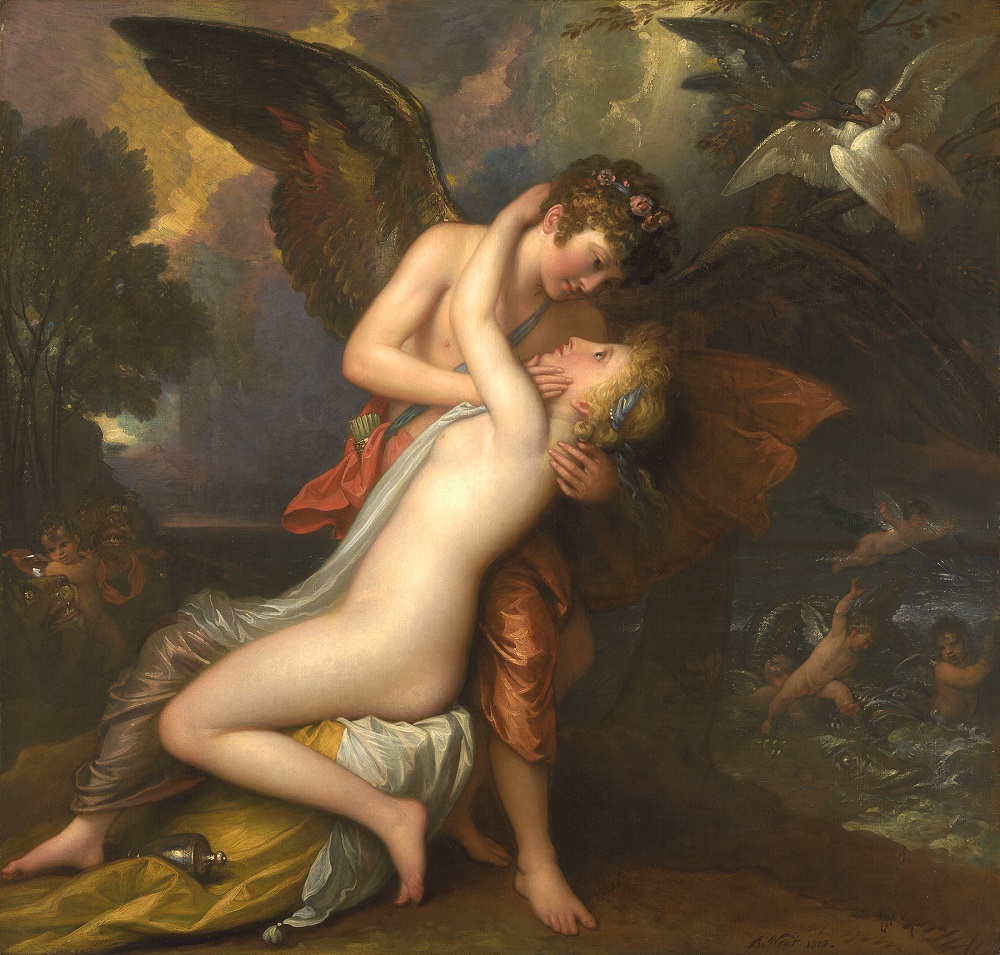
Benjamin West, Benjamin West (1738 – 1820)
Cupid and Psyche, 1808
Oil on canvas
Crystal Bridges Museum of American Art, Bentonville, Arkansas
October 10, 2016, marks the 278th birthday of artist Benjamin West. You may know him from his painting, Cupid and Psyche, on view in Crystal Bridges Colonial and Early Nineteenth-Century Gallery. Although West lived abroad in England most of his life, he was born in the United States near Springfield, Pennsylvania, making him a national treasure that both Americans and Brits can claim.
West was busy impressing people with his portraits at an early age. At 15 he caught the eye of Dr. William Smith, of the College of Philadelphia. Dr. Smith enrolled him in the college for classical studies, and soon after West was off to Italy to become a history painter. There, he studied Neoclassicism, a style that was just beginning to develop but was destined to be the fashion of the time. He traveled all over Italy and networked with all the right people in the growing movement: scholars, historians, established painters. By the time he left Italy he knew all the latest trends and was ready to begin his own career.
After leaving Italy, West moved to London to set up a portraiture business. He was ambitious, socially adept, and very much a man of his times. He soon got the attention of King George III, who became his patron, and in 1768 was appointed a member of the Royal Academy of Arts. In 1770, West completed his most well-known painting, The Death of General Wolfe, famously departing from the tradition of putting contemporary figures in togas to show their importance. By 1772, he was appointed the official historical painter of the court.
Besides his fame as a historical painter, Benjamin West was also a teacher, mentor, and friend to many. He influenced two whole generations of American artists who came to Europe to study. Charles Willson Peale, Gilbert Stuart, John Trumbull, Thomas Sully, and Samuel F.B. Morse are just a few of his successful students, and one of his most famous colleagues was John Singleton Copley.
West died in 1820. Today we remember him for his paintings that ranged in subject from historical to portrait to mythological, but we also remember him for the influence that he had on American painters for years to come.




